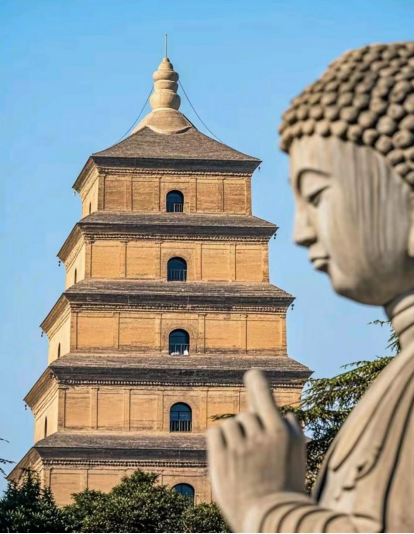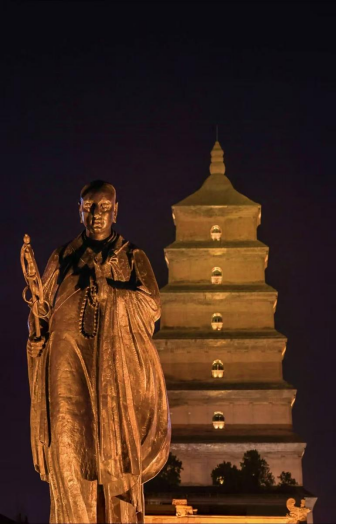Standing in the heart of the ancient Chinese capital of Xi'an, the Great Wild Goose Pagoda is a towering symbol of the Tang Dynasty culture and Buddhist heritage. This iconic structure is located within the complex of the Great Compassion Temple in the southern part of the city, where it has stood overlooking Xi'an for over 1,300 years. As one of the most famous landmarks in Northwest China, it attracts visitors from all over the world. Against the backdrop of modern urban development, the Pagoda harmoniously blends historical significance with architectural elegance.

The Great Wild Goose Pagoda was built in 652 during the Tang Dynasty, commissioned by Emperor Gaozong to house the Buddhist scriptures brought back from India by the monk Xuanzang. Xuanzang’s 17-year journey inspired the classic novel Journey to the West, and he needed a secure place to store these sacred texts and statues. Originally constructed as a five-story structure, it was later expanded to seven stories during the Ming Dynasty, reaching its current height of 64.5 meters. Its brick construction and tiered design reflect the architectural prowess of ancient China—a testament to its resilience, having withstood centuries of earthquakes and the test of time.

The Pagoda features a square base and a pavilion-style design, typical of the Tang Dynasty architecture. The body tapers gently upward, with each level diminishing in size compared to the one below, creating a balanced yet imposing silhouette. The exterior is clad in durable blue bricks, while arched doors and windows on each floor frame glimpses of the city. Inside, narrow stairs spiral upward to the top, where visitors are rewarded with panoramic views of Xi’an—a striking blend of the ancient pagoda and modern skyscrapers. Its simple yet refined design epitomizes functional beauty, cementing its status as a masterpiece of traditional engineering.


